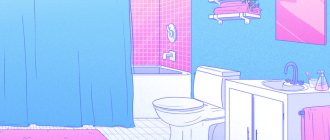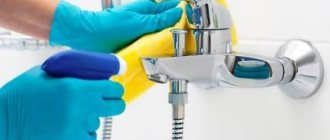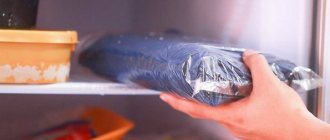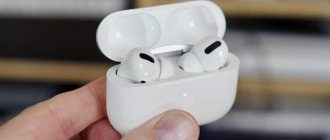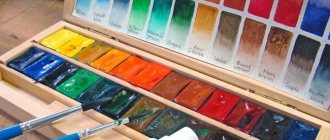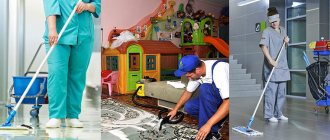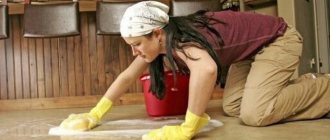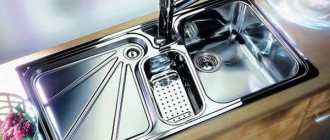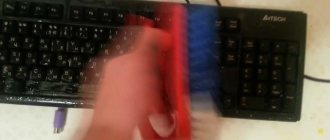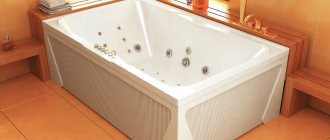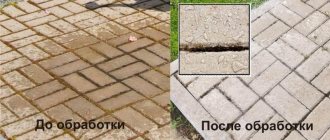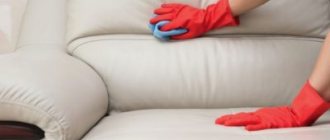What is the best way to clean a toilet?
The use of improvised components to solve any problems has long been part of our lives. For cleaning, substances that are probably found in every kitchen will be used: soda, vinegar, citric acid.
When using household chemicals, you must strictly adhere to all instructions indicated on the packaging and do not exceed the dosage. When used correctly, traditional methods and household chemicals will have a positive result.
How to bleach the inside of a toilet
When cleaning the toilet, most housewives are faced with the problem that dirt does not drain well under water. This is due to the fact that water dissolves household chemicals, and the concentration of active substances becomes less.
To clean the toilet in hard-to-reach places, the liquid must initially be removed from the bowl .
To do this, water is drained from the tank and its flow is blocked, after which the remaining liquid is pushed through with a plunger or scooped out with available containers. Then, pour in cleaning agents and leave to act for the required time. The field of this is cleaned as usual.
Formation of urinary stones and limescale
Before you start cleaning the toilet, you first need to determine what needs to be cleaned from it. After determining the nature of the contamination, you can select the correct cleaning method.
Urine stones form when you forget to flush the toilet after using it. The urine that remains on the walls eventually turns into a yellow coating, which, accordingly, turns into urinary stone. You can't wash it with a regular brush; you'll need special chemicals.
The cause of limescale is hard water. Over time, with each flush, a plaque forms on the walls of the toilet, which is then difficult to remove. Plaque accumulates most often when the plumbing is not in order, for example, when the tank is broken. If there is a malfunction, water will constantly flow down the walls, and thus the substance will accumulate over time. Lime will also be deposited inside microcracks that can form if something hot is poured into the toilet.
What toilet cleaning products are best to use?
In principle, any antimicrobial agent can be used to clean the toilet. As a rule, such products are based on chlorine, with all kinds of flavors and fragrances.
To clean the toilet, you can easily buy a product like “Duckling”, “Sanita”, etc.
You can use products made in both gel and spray form. It is quite possible to combine such means. For example, we use a gel to treat the inner rims of the toilet, as well as places near the drain, and a spray to treat the seats and outer walls of the toilet, on which it is easier and more effective to spray a cleaning product.
How to properly clean a toilet
To achieve a positive result, you need to know how to properly clean a toilet.
For cleaning you will need the following tools:
- brush with double brush;
- hard washcloth;
- pumice stone with long handle;
- thick rubber gloves;
When all the items are prepared, you can start cleaning. To get everything done and not forget anything, it is better to follow a certain action plan.
Remove all foreign objects away so that they do not interfere and there is free access to the toilet. Do not place cleaning products on the drain tank; they may tip over and cause harm to you.
Before cleaning the inside of the toilet, use a plunger to remove water from the bowl. If there is an accumulation of sand that is not washed off, pour a bucket of water into the object and use a plunger, this should wash the sand away.
Pour warm water inside, but not hot. This will ensure that the detergent works effectively. Treat the entire interior surface with detergent. Don't forget about the areas under the rim. Leave everything for half an hour.
While the detergent is doing its job, start cleaning the outside surface.
Wipe the drain tank, handle, and lid thoroughly. Wash the seats well and wipe them with a dry cloth. Soak a sponge in detergent and thoroughly clean the hinges on which the lid is attached. You can use a stiff brush or brush for cleaning.
After you have dealt with the lid, start cleaning the lower part - the toilet glass.
After half an hour, return to cleaning the inner walls. Take a brush and spread the cleaning agent well over the entire interior surface. Also thoroughly wipe any dirty areas under the headband. Carefully process the bottom of the bowl and drain. When everything is thoroughly washed, rinse off the water and any remaining cleaning product will be removed.
When you finish cleaning, put everything in its place, and under no circumstances leave a wet brush in the tray. It needs to be dried well. Place the item under the toilet lid so that any remaining water will drain into the bowl. If this is not done, then harmful microbes and fungus will develop on the wet brush.
Don't forget to also replace the freshening unit, so the toilet will always have a pleasant aroma.
Types of toilet coverings
You need to clean the toilet with special brushes
Before you start figuring out how to clean a toilet, you should understand what types of protective coatings exist on toilets. Each material has its own individual characteristics and requires special care.
Almost all types of toilets are coated with a special protective glaze, which visually resembles enamel. Glaze is a wear-resistant material that can withstand mechanical and chemical influences. To maintain its attractive appearance and avoid mechanical damage, do not use hot water when washing. If the protective layer is cracked, then pathogenic organisms will begin to accumulate en masse in it.
To prevent damage to it, you need to pay attention to the following:
- The surface should not be cleaned with hard brushes, sponges with abrasive particles or sharp objects.
- You need to carefully purchase industrial detergents, read the information on the label and follow the attached instructions for use.
Professional chemistry
With the help of household chemicals, you can easily deal with any type of pollution, the main thing is to use it correctly and adhere to your own safety rules.
Almost all professional products contain aggressive acids, alkalis and chlorine. Therefore, when using any chemical, be sure to wear gloves and a mask. Household chemicals will help get rid of dirt and also help disinfect the toilet.
Oxalic acid . You can buy it at a pharmacy or in the household chemicals department. Take a wet washcloth or brush, sprinkle some powder on it, and scrub the dirty area well. It's even better to pour the powder inside at night. Some cleaning products have been developed based on the substance: Sanox, Sarma, Ultra.
Orthophosphoric acid . The substance perfectly removes contaminants. The substance is safe for plastic pipes. Pour the cleaning agent into the toilet and inside the tank for a quarter of an hour. After this time, clean everything well and rinse off the water. The component removes traces of rust and lime.
Chlorine-containing substances . In powder form, they are quite often used to treat public toilets. This is an excellent disinfectant and bleaching agent. At home, using chlorine is often not recommended, since the substance can harm the ceramic surface, and the evaporation of the substance is dangerous for humans, you can get poisoned or damage the surface of the toilet bowl.
If you don’t want to use bleach, use products based on it, for example, “Beliznaya”. Spray the toilet with bleach, after half an hour scrub it well with a brush, and flush.
Hydrochloric acid . It is dangerous to use the substance in its pure form, so it is best to buy acid-based household chemicals:
- Domestos;
- Silit Beng;
- Toilet duckling;
- Hedgehog;
- Sun Tree.
All of the detergents listed have easy-to-use packaging. It has a thin spout, with which you can easily treat hard-to-reach places, such as under the headband. This packaging is also designed to be child resistant. The cleaning product is a thick gel that is evenly distributed over the surface and lingers on it for a long time.
Pemolux is a soda-based cleaning product available in powder form. The composition also includes marble chips, fragrances and surfactants. With the help of the drug you can easily eliminate limescale and urinary stones. Before using the substance, you should remove all water from the toilet. Distribute the product evenly over the entire contaminated surface and wipe with a hard sponge or brush. There is a nuance in using Pemolux; it scratches the ceramic surface and leaves microcracks in which dirt will accumulate over time.
Do not use electrolytes for cleaning, as this may cause chemical burns.
If the toilet is a color other than white, do not use chlorine or acid based products as they may affect the color.
How to clean a toilet at home
There are many products that are used to clean toilets from different types of contaminants. Most of them are universal, since their composition and properties are capable of destroying deposits on the walls of plumbing fixtures, regardless of their origin . Conventionally, funds are divided into 2 types : improvised and industrial. The first became known thanks to the experience of housewives of different generations in the struggle for cleanliness in the house, the second appeared due to the development of the production of household chemicals.
Photo 1. It is better to avoid heavy contamination and regularly carry out preventive cleaning of plumbing fixtures with a brush.
How to remove yellow stream using improvised means
Previous generations have accumulated vast experience in cleaning plumbing fixtures. The peculiarity of the methods lies in their accessibility and availability in almost every home. The advantages include a gentle effect on plumbing and pipes : most products can also be used on plastic pipelines. The disadvantages of such methods are that they are ineffective against old contaminants .
Baking soda
Soda, when it gets on plaque, softens its layer, destroying the structure of deposits. Using this product you can completely remove dirt from the surface of the toilet. To do this, you only need a pack of soda (200 g), a brush or sponge . Soda is applied to the surface of the bowl, after removing the water from there, and left to act for 4-5 hours (it is better to do the procedure at night). After this time, the toilet is treated with a sponge or brush and washed with water.
Acids
Acids that help in the fight against limescale are: citric, acetic and oxalic. You can remove dirt with 9% vinegar heated to 40 degrees . Acid is poured into the toilet bowl for at least 4 hours , then the surface is treated with a brush.
The same effect will be obtained if you pour 100 g of citric acid into the toilet for several hours .
The disadvantage of this method is that it is effective until the contamination has reached a critical point. It is also worth noting that it is not possible to completely clean the product in one procedure; you will have to repeat it 2-3 times .
White
The product removes yellow plaque well and whitens the surface of the bowl. To process, you need to pour a bottle of white into the toilet overnight , after removing the water from there using a plunger or other available means. In the morning , the surface is washed with water several times .
The disadvantage of whiteness is that the product releases chlorine , which has an adverse effect on the body, as well as on rubber seals, which after procedures lose their elasticity and begin to leak water.
How to clean yellow stains from water using special means
Household chemical stores offer a huge selection of toilet cleaning products. It is recommended to use them in cases where folk remedies become powerless. However, it is important to note that strong cleaners contain high concentrations of acid , which dissolves not only unwanted plaque.
It is better not to use strong detergents for cleaning plumbing:
- If water pipes and sewers are made of plastic , many potent substances, along with contaminants, corrode the surface of the pipes.
- If the products contain chlorine . It is better not to clean products equipped with rubber elements with them - under the influence of active substances, rubber loses its properties and begins to let water through, resulting in smudges and the formation of limescale.
- If the surface of the plumbing fixtures is varnished , the products corrode the top layer.
Orthophosphoric acid
Cleaners based on this substance effectively fight plaque and rust on the surface of plumbing fixtures. To do this, 100-150 ml of chemicals are poured into the toilet and tank, left for 10-15 minutes , and then washed off with running water. The advantage of the products is that they do not destroy rubber and plastic elements of plumbing fixtures.
Acid can be used either as a stand-alone product or as part of special gels (for example, Faberlic Toilet Bowl Cleaner ).
Hydrochloric acid
The composition is used very carefully, protecting the skin with rubber gloves and the respiratory tract with a respirator. To remove limescale, it is enough to wipe the surface with hydrochloric acid; to remove urinary stones, the product is poured into a bowl for 10-15 minutes , after which it is treated with a brush and washed off with running water.
Important! Hydrochloric acid corrodes plastic and is therefore not suitable for this type of pipeline.
Toilet bowl cleaners based on hydrochloric acid: Cillit Bang, Domestos, Toilet duck active 5 in 1 .
Abrasives
Found on store shelves in powder form. They remove dirt quite well, but when used, granules leave micro-scratches , as a result of which plaque will form more often. To clean the toilet, you need to cover the dirt with powder and leave it for the time recommended by the manufacturer (indicated on the packaging). After this, the toilet is treated with a brush and washed with plenty of water.
Photo 2. Examples of powerful cleaners. They contain acid in high concentration, which dissolves not only unwanted plaque.
Popular abrasive products for the toilet: Pemolux, Sanita, Comet, Sorti .
Important! When using household chemicals, it is not recommended to neglect protective equipment and carry out cleaning with rubber gloves.
Folk and improvised means
With the help of available means, you can eliminate fresh dirt and carry out prevention.
Table vinegar . Heat 250 grams of the substance to 40-50 degrees in a closed container so as not to inhale the fumes. Add one tablespoon of baking soda and one drop of iodine to the heated liquid. Treat the contaminated area with the resulting solution and leave for 6 hours. After this, scrub the area well with a brush and rinse off the water. This way you can effectively remove limescale and urinary stones.
Lemon acid . The substance will help eliminate fresh plaque. At night, place crystals in the toilet bowl in the desired areas. The powder should not remain dry, it must be moist for it to work. In the morning, wipe the dirty area with a stiff brush and rinse off the water. If you are unable to remove all the dirt the first time, repeat the procedure again. To make foam from the acid, add wood ash to it.
Coca Cola . This drink can dissolve limescale and clean the toilet until it shines. This happens due to the presence of phosphoric acid in the composition. Pour cola inside for one night, and in the morning wipe with a brush and rinse off the water.
Mustard powder .
With this product you can remove greasy deposits and disinfect. Mix together a tablespoon of mustard, starch and citric acid. Add a little water to form a mushy mixture. Treat dirty areas and leave for several hours. Then scrub with a sponge or brush and rinse with water. The powder cannot remove old stains, so use it only to remove fresh stains.
How to bleach a toilet seat and lid
As noted, yellow spots on the toilet lid appear both due to the natural aging of plastic and under the influence of the external environment. Therefore, if none of the cleaning methods helped, the toilet seat needs to be replaced with a new one.
A cheap way to clean old stains
Baking soda helps to whiten toilet lids from yellowing. To do this you need:
- Mix 2-3 tbsp. l. soda with a liter of hot water.
- Pour this mixture into an enamel or steel bowl.
- Place the lid on the mixture and wait a few hours. This period depends on the intensity of pollution.
- Rinse the lid under water.
The hotter the water, the faster the impurities are removed. But you cannot clean a plastic toilet seat with boiling water.
This method helps to wash the lid of any remaining urinary stones. If yellow spots appear for other reasons, the described method will not be effective.
Whitening yellowed plastic
If the appearance of a yellow coating on the lid is explained by natural obsolescence, then to restore the toilet seat you need:
- Soak a piece of cloth in alcohol (vodka).
- Rub problem areas vigorously. If necessary, the lid can be left for several hours.
- Rinse several times with water.
To remove yellow stains, the toilet seat can be soaked overnight in a detergent containing chlorine.
A hair lightening product gives a similar result. However, each of the above remedies can cope with newly appeared yellowness.
Household chemicals
It is recommended to wash the toilet seat using professional chemicals, as some folk remedies corrode plastic. To remove such stains use:
- Sanita. A gel-like cleaning agent that costs about 55 rubles. This product does not emit an unpleasant odor and removes yellow stains within 5 minutes after application. To wash the toilet seat, you need to apply Sanita to the problem area, wait the specified period and rinse with water.
- Cosmofen-10. This product was created to clean plastic products from yellow deposits. Cosmofen-10 is produced in the form of a spray costing 300 rubles. To remove plaque, apply the product to the stains and wipe with a dry cloth.
- Comet. Powder costs from 60 rubles. Comet copes with various contaminants. To remove yellowness, the powder must be applied to the contaminated area and rubbed with a sponge. At the end of the procedure, the product is washed off with water.
When using household chemicals, you need to take into account that some bleaches are not suitable for cleaning plastic. This feature is indicated on the product packaging.
Step-by-step instructions for cleaning the toilet
We provide step-by-step recommendations on how to properly clean the entire toilet, this will help you not miss anything and achieve the desired result.
It is best to remove all foreign objects from the toilet, so that nothing will interfere with the cleaning process. Make sure that there is nothing left on the drain tank either, otherwise something may fall inside and clog the drain.
Wear protective gloves and a mask. Treat the surface of the toilet bowl with household chemicals.
While the detergent is working, begin cleaning all other surfaces. Wipe the walls thoroughly, check hard-to-reach areas of the room to detect fungus and mold in time.
Wash the sink and faucet thoroughly. If the room has a shower or bathtub, clean that too well.
When all household appliances are washed, start mopping the floor. After this, wait until all surfaces dry and you can put all the items in their places. Do not lay rugs on wet floors to avoid creating conditions for the growth of fungi, mold and bacteria.
FAQ - Apartment cleaning - How often should you clean the toilet in your apartment?
1. How often should you clean the toilet in your apartment?
Each housewife has an individual schedule for washing this unit, which is necessary in every home. Some people wash it once a week, others every day. And only professional cleaners know the required frequency:
- washing with a brush and a special toilet cleaner – once a day;
- disinfection of the toilet and the entire toilet, including the door handle, once a week;
- Thoroughly clean the toilet after guests arrive.
The last point is explained by the fact that each person has his own microflora, so even the smallest microbes from one can cause severe poisoning in another.
Our representative will contact you shortly and answer all your questions.
What are the best tools to use to clean a toilet?
Ershik.
Of course, this is the main tool for cleaning the toilet. If possible, it is worth purchasing a brush with a retractable handle for cleaning the surface under the rim. Using this device, you can thoroughly clean the headband, preventing the growth of germs and bacteria.
Rag or sponge.
Using a household rag or sponge, you can clean the top surface of the toilet and the seat. These parts should be cleaned separately, starting from the inside, using separate tools and seat cleaners (usually creamy ones).
Small brush.
In addition to the toilet brush, it is recommended to use a small brush to clean the top of the toilet, especially the hinges and hard-to-reach areas. If you can't find a special brush for cleaning toilets, use a regular toothbrush. If you have two old toothbrushes, you can use one to clean the toilet rim and the other to clean the toilet seat.
How to clean a toilet: instructions
How great it is when a bathroom or toilet shines with crystal whiteness and pleases the eye for you and your guests. To achieve this, you need to carefully and properly care for it. Our article presents a sequence of actions that must be followed when washing plumbing fixtures in order to bring it to perfection:
- Before cleaning the toilet, protect yourself first. Wear long rubber gloves on your hands and glasses on your eyes. Since the toilet is the main place where bacteria are concentrated in the house, take care of your hygiene and ensure that when cleaning the toilet your hands remain dry and clean and no chemicals get into your eyes.
- Next, take a soft cloth and wet it with hot water. Gently wipe the outside of the entire toilet from the tank to the very bottom, and don't forget about the seat and lid of your toilet. This will make it easier to get rid of dirt in the future, since during the time you perform other actions, it will become acidic and come off easier.
- Then you need to take care of the inside of the toilet, since this is considered the most contaminated area and is where stains, rust and limescale most often appear. Take a plumbing cleaner and apply it to the bowl so that it flows over the entire surface in a circle - from the rim down to the water. Leave the liquid for about 5-10 minutes for the chemical to take effect, and then carefully wipe everything with a brush to get rid of all dirt and stains. When cleaning, also pay special attention to the bottom of the device and wash it thoroughly.
- Now you need to thoroughly rinse the inside of the toilet and the brush. To do this, flush the water and rinse the toilet bowl along with the brush, repeat this procedure at least several times.
- Then we return to the outside of the plumbing fixture. Once the dirt has dried, remove it with a damp cloth, and then disinfect the entire toilet, as well as the seat on both sides and the lid with a special cleaner. For such purposes, universal chemical solutions for washing bathtubs and toilets are suitable. After using household chemicals, be sure to wipe off any remaining residue with a damp cloth and then dry it with paper towels.
Below we have prepared a video for you on how and how to clean the toilet correctly. It will clearly show all stages of cleaning.
Advice : if there are old stains on the surface of your toilet that do not disappear after the first cleaning procedure, then repeat the entire process of cleaning its inner bowl several times until the stain disappears completely.
Causes of toilet contamination
Every woman loves when the toilet in the house sparkles with cleanliness and this is one of the main reasons for their pride. Unfortunately, achieving such a result can be quite difficult. And the most annoying thing is that this result does not last long. After several days, you can see unpleasant red marks on the toilet.
The main problems are yellowness, smudges and deposits.
This is rust, or rather its streaks, which are the result of iron oxidation. And so, it would seem, where can it come from? The very first reason is engineering communications. All this is a consequence of the old highway. When oxidizing particles get into water, it leaves behind a rather ugly trace.
You can not only remove old plaque with your own hands, but also prevent its appearance.
Urinary stone can also become a serious pest for the toilet. It is formed in the human body and is quite difficult to remove. If you do not flush the toilet often or do not clean it, then very soon your toilet will develop a strong coating, and you yourself will be the cause of this.
Frequent cleaning will help get rid of plaque on the toilet.
These two types of contamination are very different from each other, but they all also cause damage to the toilet. It is also worth getting rid of them in different ways and devices. It is also worth reminding you that all contamination appears in those places where cracks or a rough surface have already begun to appear.
Modern means will help get rid of contaminants.
The toilet may lose its original appearance and begin to develop cracks if you only throw hot substances into it. It is very harmful for the toilet to feel a large temperature difference. Therefore, if you want to throw something away or pour something hot into it, then it is better to let it cool.
Choosing: What type of toilet flushes well?
One of the important indicators when choosing plumbing equipment is the flushing system. The factor itself consists of such components as the method of water supply and the flushing process itself.
There are two options for water supply:
Cascade type
This method is a traditional single-hole liquid supply.
A continuous stream washes the surface of the bowl, so you shouldn’t really hope for the possibility of saving water here. At the same time, when choosing which of the presented toilets flushes well, you should take into account that the cascade system has such advantages as: However, the negative aspects of this type of water supply should also be noted. In addition to the increased consumption of flushing fluid, there are hygienic problems:
- the stream of water does not cover the entire area of the bowl;
- increased cleaning requirements.
It is advisable to use a special filter in the supply system to prevent the appearance of rusty deposits. The cascade option is most often used in funnel-type bowls, but it can also be found in toilets with a springboard shelf.
Shower type
This method appeared relatively recently. Anyone else thinking about the question of which system flushes the toilet better should pay special attention to this option. Its advantages are:
- economical water consumption;
- effective flushing;
- minimal care.
All these points are provided by holes located around the entire perimeter of the bowl. Thanks to them, when you press the drain button, a water funnel is formed, which washes the entire area of the bowl. Jets of water can be directed either at an angle or directly in relation to the rim of the plumbing unit.
Thus, the option with a shower flush system is more preferable, but it is worth paying attention to some more nuances.
